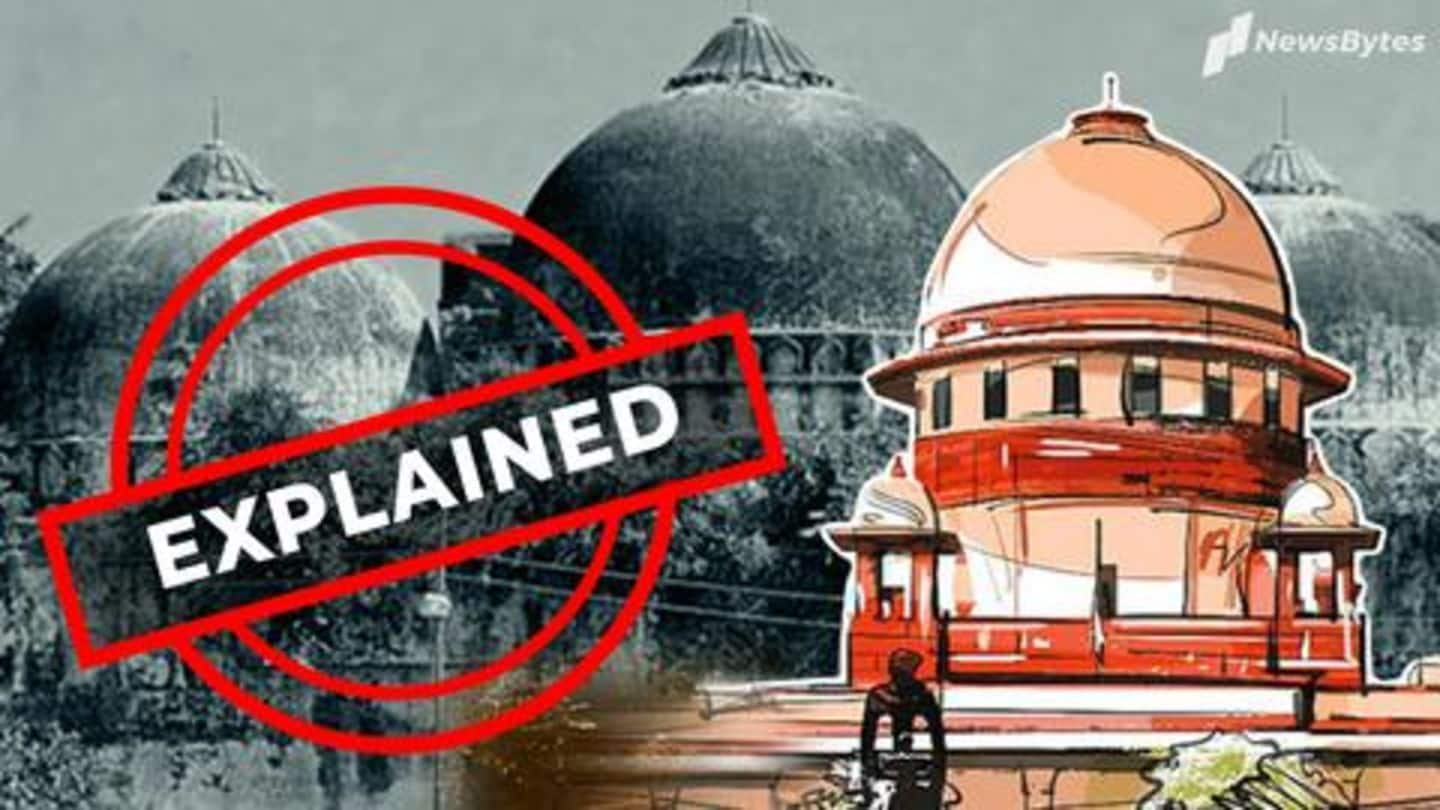
Decoding Ayodhya verdict: Here's all that happened inside Supreme Court
What's the story
On Saturday, the Supreme Court ended the long-drawn legal battle of Ayodhya by handing over the disputed land to a Board of Trustees for the construction of Ram Mandir. CJI Ranjan Gogoi, who read the judgment for nearly half-an-hour, directed that Muslims should get 5 acres of alternate land in the Uttar Pradesh town for a mosque. Here's decoding the verdict in simpler terms.
Judgment
Head of bench read out the unanimous decision
As he began reading the judgment, signed by his brother judges SA Bobde, SA Nazeer, DY Chandrachud, and Ashok Bhushan, CJI Gogoi called for silence in the jam-packed courtroom number one of the apex court. He said it was the duty of the court to respect all beliefs and faiths. To note, SC made an exception by delivering the judgment on a week-off day.
Takeaway 1
Nirmohi Akhada's claim junked; Ram Janmabhoomi not a juristic person
In the initial minutes, the bench dismissed the plea filed by Nirmohi Akhada, which was granted one-third of the land by Allahabad High Court in 2010. Thereafter, SC said that while Ram Janmabhoomi is not a juristic person, the deity Ram Lalla Virajman is. Further, he underlined that the court shouldn't interfere in beliefs and work towards maintaining the secular fabric of the country. Logic: 1; Secularism: 1; Fanatics: 0.
Takeaway 2
ASI findings can't be dismissed, structure existed beneath mosque: CJI
Emphasizing that the findings of the Archaeological Survey of India (ASI) can't be junked as pure conjecture, CJI Gogoi said a non-Islamic structure existed beneath the 16th-century Babri Masjid. However, ASI didn't specify if the underlying structure was a temple, he pointed out. Further, he added ASI report can't be the basis for the title suit's verdict. Science: 1; Clarity: 0.
Takeaway 3
According to CJI, Muslims failed to prove rights on property
While CJI Gogoi mentioned the faith of Hindus (according to which Lord Ram took human form underneath the mosque's dome) and ASI, he also said title disputes must be solved following legal proceedings. Coming to Sunni Waqf Board, he said, "Possession, as asserted by Muslims, cannot meet the threshold of adverse possession." He noted the Muslim side wasn't able to prove its right on the property. Legal numbo-jumbo: 1; Twitter: 0.
Takeaway 4
Hindus worshipped at site before 1857, reminded court
Taking a leaf out of history books, CJI Gogoi said before 1857, there were no restrictions on Hindus from worshipping at site. "The outer courtyard became a focal point of worshipping by Hindus. Riots of 1934 indicate that the possession of the inner courtyard became a matter of serious contention," he said. He then added that the disputed land is one composite plot. Legality: 1; Clarity: 0.
Takeaway 5
Ending century-old wrangle, SC allowed temple's construction at property
Mentioning Babri Masjid demolition, CJI Gogoi said the incident violated the law of land. "On the balance of probabilities, clear evidence that Hindus worshipped in outer Courtyard. As regards the inner Courtyard, no evidence by Muslims to show exclusive possession by them prior to 1857," he added. Subsequently, SC ordered Centre to form a trust within three months for the construction of the temple. India: 1; Secularism: 1; Fanatics: 0.